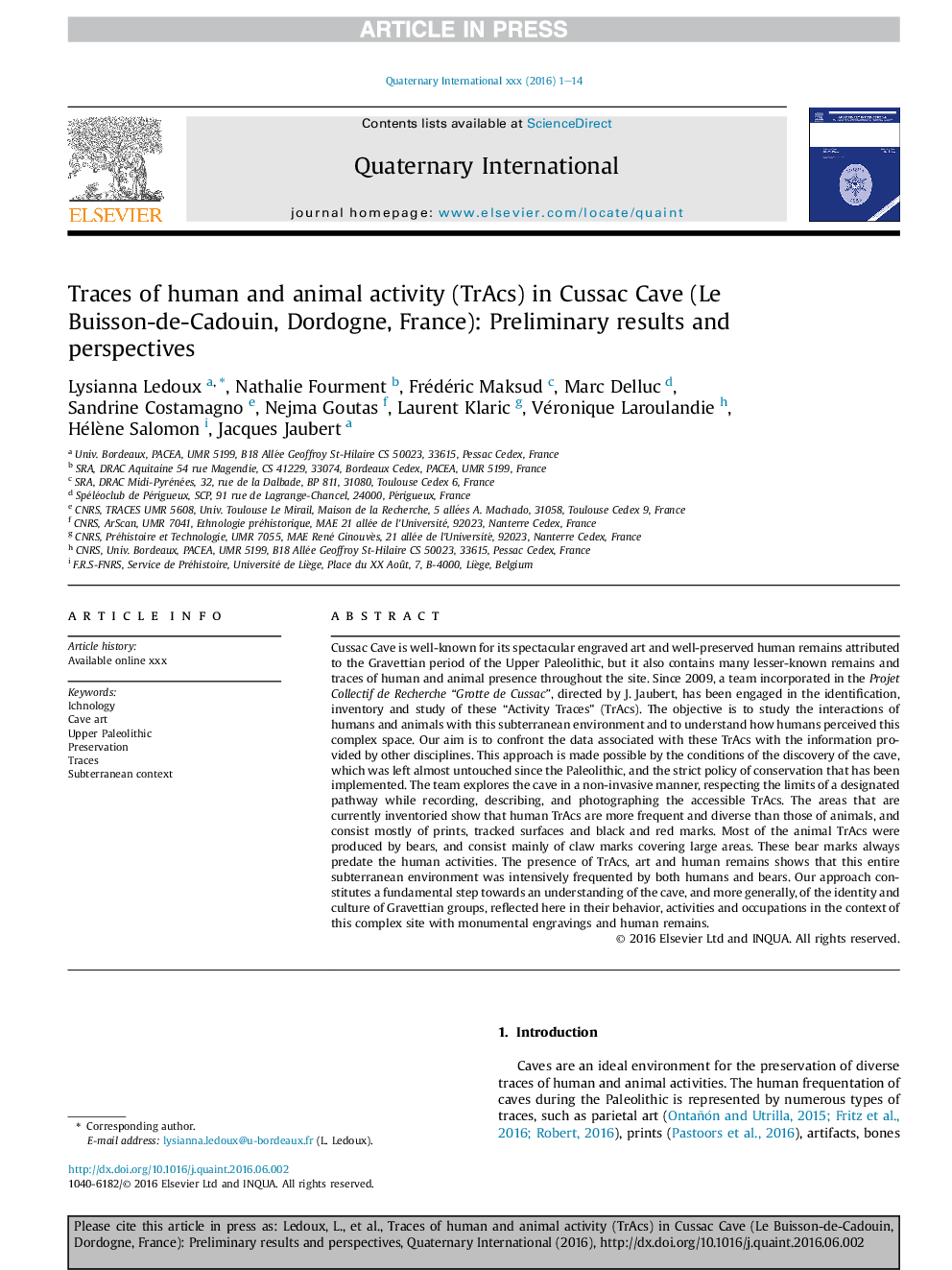| کد مقاله | کد نشریه | سال انتشار | مقاله انگلیسی | نسخه تمام متن |
|---|---|---|---|---|
| 5113913 | 1377957 | 2017 | 14 صفحه PDF | دانلود رایگان |
عنوان انگلیسی مقاله ISI
Traces of human and animal activity (TrAcs) in Cussac Cave (Le Buisson-de-Cadouin, Dordogne, France): Preliminary results and perspectives
دانلود مقاله + سفارش ترجمه
دانلود مقاله ISI انگلیسی
رایگان برای ایرانیان
کلمات کلیدی
موضوعات مرتبط
مهندسی و علوم پایه
علوم زمین و سیارات
زمین شناسی
پیش نمایش صفحه اول مقاله

چکیده انگلیسی
Cussac Cave is well-known for its spectacular engraved art and well-preserved human remains attributed to the Gravettian period of the Upper Paleolithic, but it also contains many lesser-known remains and traces of human and animal presence throughout the site. Since 2009, a team incorporated in the Projet Collectif de Recherche “Grotte de Cussac”, directed by J. Jaubert, has been engaged in the identification, inventory and study of these “Activity Traces” (TrAcs). The objective is to study the interactions of humans and animals with this subterranean environment and to understand how humans perceived this complex space. Our aim is to confront the data associated with these TrAcs with the information provided by other disciplines. This approach is made possible by the conditions of the discovery of the cave, which was left almost untouched since the Paleolithic, and the strict policy of conservation that has been implemented. The team explores the cave in a non-invasive manner, respecting the limits of a designated pathway while recording, describing, and photographing the accessible TrAcs. The areas that are currently inventoried show that human TrAcs are more frequent and diverse than those of animals, and consist mostly of prints, tracked surfaces and black and red marks. Most of the animal TrAcs were produced by bears, and consist mainly of claw marks covering large areas. These bear marks always predate the human activities. The presence of TrAcs, art and human remains shows that this entire subterranean environment was intensively frequented by both humans and bears. Our approach constitutes a fundamental step towards an understanding of the cave, and more generally, of the identity and culture of Gravettian groups, reflected here in their behavior, activities and occupations in the context of this complex site with monumental engravings and human remains.
ناشر
Database: Elsevier - ScienceDirect (ساینس دایرکت)
Journal: Quaternary International - Volume 430, Part A, 12 February 2017, Pages 141-154
Journal: Quaternary International - Volume 430, Part A, 12 February 2017, Pages 141-154
نویسندگان
Lysianna Ledoux, Nathalie Fourment, Frédéric Maksud, Marc Delluc, Sandrine Costamagno, Nejma Goutas, Laurent Klaric, Véronique Laroulandie, Hélène Salomon, Jacques Jaubert,